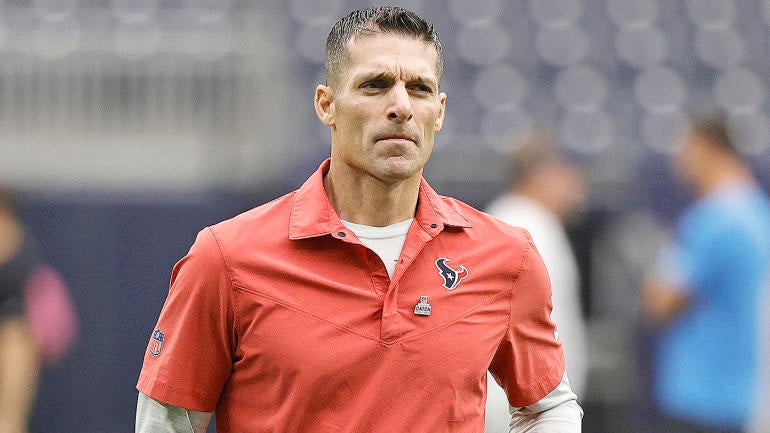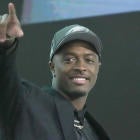
He won six Super Bowls with the Patriots, but after New England's organizational shift away from Tom Brady in 2020, he, too, went elsewhere.
Most everyone believed Nick Caserio was the Patriots GM in waiting, set to eventually replace de facto GM Bill Belichick as New England's personnel shot-caller when the future Hall of Fame coach retired.
Instead, Caserio has spent the past three years incorporating all the team-building knowledge he soaked up in the early 2000s at the start of his football career while in New England ... with the Houston Texans.
Ironically, this has all happened precisely when the Patriots have sunk into an unrecognizable state, now forced to embark on a rebuild on their own.
But in Houston, starting in 2021, the task at hand for Caserio was as challenging as a rebuild gets. The Deshaun Watson saga was an ominous dark cloud parked over the franchise. Powers that be above Caserio on the organizational hierarchy seemed dead set on keeping the team locked in the NFL's basement. Three head coaches later, Caserio and Co. seemed to have hired the right guy in DeMeco Ryans. And for as much credit as he deserves for his part in Houston's rapid reclamation project, let's focus on Caserio's low-key prudent drafting at the core of this turnaround.
Caserio's first pick was quarterback Davis Mills, who proved to be a serviceable bridge starter during the initial lean years. But due to horrible draft-altering decisions before him, Caserio wasn't able to make that first selection until the third round of the 2021 NFL Draft.
Then, 22 picks later, with 13 receivers already off the board, Caserio decided upon Nico Collins from Michigan, a tall and lengthy rather enigmatic prospect. He just so happened to be an exquisite "rebuilding" wideout because his mere 79 career receptions across three seasons in Ann Arbor and explosive pro-day workout hinted his best football was in front of him.
And has that ever been true.
Collins is arguably the NFL's biggest breakout star on offense, currently ninth in the league with 991 receiving yards and second in football with a 16.8 yards-per-catch average (among wideouts with at least 50 snags). Heck, only Tyreek Hill and A.J. Brown currently have more 25-plus-yard receptions than Collins. He has 12 of those splash plays through Week 13. He's become a franchise-building block and is one of the more uniquely built, uniquely capable wideouts in football.
Then came Caserio's first "full" draft in 2022. And, yes, he probably got Derek Stingley Jr. vs. Sauce Gardner wrong with the No. 3 overall pick. But Stingley, now finally healthy, does lead the Texans with four interceptions and is second on the team with eight pass breakups through 12 contests.
Caserio didn't stop finding impact players at No. 3 overall with Stingley. In Round 2, a dynamic, do-everything safety, Jalen Pitre was selected. He's second on the team in snaps and has played three different positions this season -- slot corner, box safety, and free safety. While not as productive as his rookie campaign, Pitre's genuine versatility has been key to Houston's defensive ascension. In Round 3, Caserio picked Alabama linebacker Christian Harris, a small but feisty, disruptive hitter currently second on the club in tackles. He's also defended four passes. His speed is vital at the second-level. While not as physically imposing as Collins for his position, like Collins, Harris was another prospect tailor-made for a rebuild because of the potential that naturally comes with a linebacker who boasts 4.44 speed and an 11-foot broad jump.
Dameon Pierce, Houston's fourth-round pick in 2022, was the unequivocal workhorse as a rookie and averaged 4.3 yards per carry. While he's taken a backseat to free-agent signee Devin Singletary in his sophomore season in the NFL, Pierce remains one of the league's more difficult-to-tackle runners with a forced missed tackle rate close to 20%. Oh by the way, Pierce was the seventh running back off the board in his class and entered the league with a mere 329 total carries in his college career at Florida. Another nice, upside find for Caserio.
Then, finally with a reasonable amount of cap space to sign quality veterans to help make the whole roster respectable, Caserio did what every GM should do by his third draft -- he swung for the fences at the quarterback position and changed philosophies. Now, some fortune did go in Caserio's favor, when the Panthers picked Bryce Young after their colossal trade up with the Chicago Bears, leaving C.J. Stroud for the Texans at No. 2 overall. But the Stroud pick signaled Caserio was ready to win right now.
Two years ago for Houston, Anthony Richardson, with his raw game but All-Pro upside, would've been a logical choice. Stroud was considerably more polished as a passer with more collegiate experience. It was the sensible pick given where the Texans were in their rebuild.
Then, Caserio desperate for another building block, made an immediate trade-up to grab Alabama edge rusher Will Anderson at No. 3, emphatically signaling his "draft for upside" philosophy had shifted. Tyree Wilson would've been the choice while the Texans were at the ground floor of their franchise renovation.
Anderson, the former top outside pass rusher recruit in the nation, with three years of incredible productivity at Alabama, was the significantly more NFL-ready prospect. Sure, it was costly -- a swap of firsts, a second-rounder, and a first and third in 2024 -- but not one person in Houston is thinking about the future ramifications of that trade today.
Anderson has a whopping team-high 47 pressures at a darn-good 14.5% pressure-generation rate with sturdy edge-setting run defense -- including eight tackles for loss -- at close to 70% of Houston's defensive snaps. In short, he's absolutely been as advertised and worth the cost to get him.
Can't forget about Tank Dell either -- the not-even 5-foot-9, 165-pound wideout in Round 3 after eight pass catchers had already been selected. Because of his tiny frame and poor workout, Dell was not an "upside" choice by the classic definition. He was ready to go after leading college football with 1,398 receiving yards and finishing second in the nation with 109 catches in his final season right down the street at the University of Houston. While a broken leg will prematurely end his rookie campaign, Dell led the team in receiving touchdowns and was second on the team to Collins in receiving yards and catches.
Beginning as a personnel assistant with the Patriots in 2001, Caserio started with a back-row seat at the outset of New England's eventual two-decade long dynasty, and he then climbed the personnel decision-making ladder as it all unfolded. Before leaving, he was said to be Belichick's right-hand man as they constructed the roster each offseason.
Caserio clearly took the lessons he learned in New England and has implemented them into what has become a stellar, reasonably rapid rebuild and rise in Houston. Understanding the type of prospects to draft at the start of said rebuild was important. Knowing precisely when to adopt a new ideology to select more "prepared" prospects in the draft has been even more vital.
























